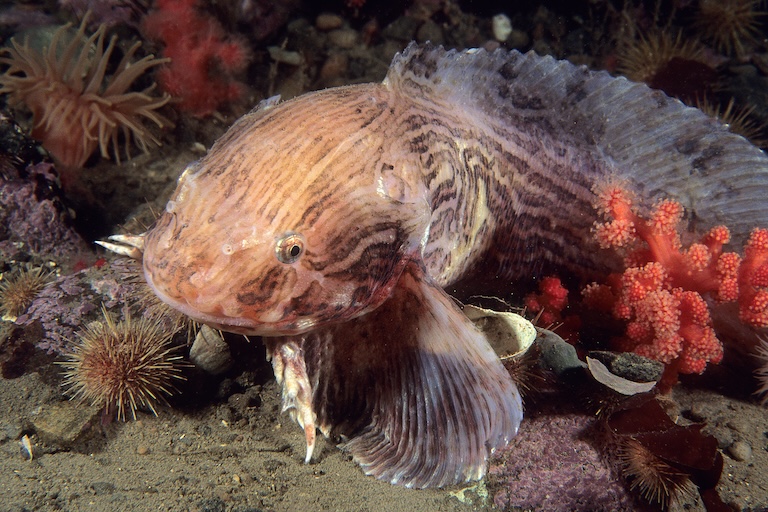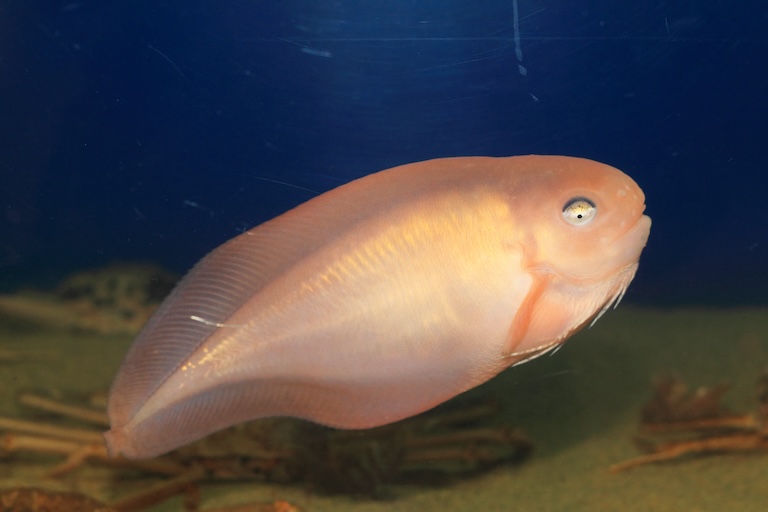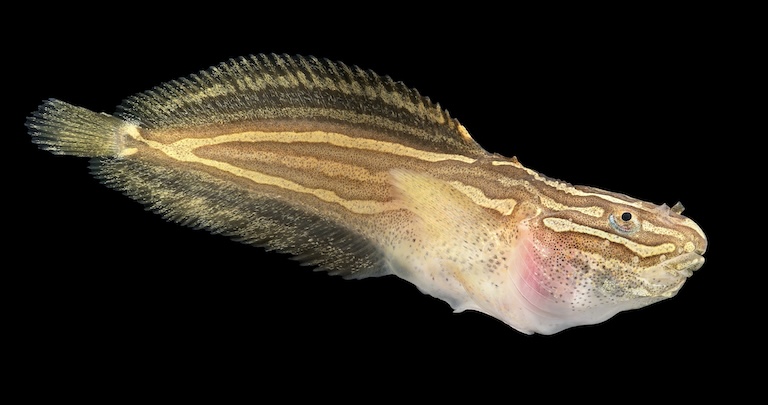Snailfishes Profile
We’re still figuring out the ins and outs of marine life at depth, how it finds food or mates, how it tolerates tremendous pressure, and which evolutionary adaptations arose to help it in these endeavours.
Usually, it’s a matter of comparing one deep ocean species to a distantly related shallower-water one, but with snailfishes – perhaps the family of fishes with the most diverse range of habitats – marine biologists have a lot more to work with.

Snailfishes Facts Overview
| Habitat: | Marine, from shallow coastal to the deepest depths |
| Location: | Worldwide |
| Lifespan: | From less than a year to more than 10 years |
| Size: | Up to 77 cm (30 in) in giant species |
| Weight: | 21 kg (46 lb) in the largest, usually much smaller |
| Colour: | Varied across hundreds of species, some spotted, striped, uniform |
| Diet: | Mostly plankton and small invertebrates, some larger species eat small fish |
| Predators: | Varied, mostly larger fishes |
| Top Speed: | Generally slow moving |
| No. of Species: | Over 400 are described, but many more to come |
| Conservation Status: | Data Deficient |
Snailfish live up to the name in a handful of ways. First, they’re fish, which covers half of it. Then, they’re part slime, and occasionally even deal in shells.
These members of the lionfish order are not nearly as pretty but infinitely more accomplished, being found all over the world’s oceans, from top to bottom.
Interesting Snailfishes Facts
1. They’re in the lionfish order
The order Scorpaeniformes contains some of the most species of any bony fish order. This group is characterised by a particular bone near the eye that looks a bit like armour and supports the mouth, giving them the nickname mail-cheeked fish.
This is the group that houses the beautiful lionfishes, among others, and most are bottom dwellers, like the snailfishes, who make up just one of at least 36 families within the order.
But what a family! It seems you cannot go anywhere in the ocean without bumping into a snailfish.

2. They’re everywhere
Snailfish are found in every ocean from the Arctic to the Antarctic. This is kind of impressive, though what really sets them apart is how far vertically they can extend.
This family is found on the sea bed from shallow coastal waters to the bottom of ocean trenches. They are as comfortable in very hot areas as they are in extremely frigid Hadal zones. If anything, they prefer the cold, being as they seem, more diverse in Antarctic waters than anywhere else.
There are only 400 or so species documented, but it’s assumed that there are many more still to be described.
3. They’re part jelly
When brought up from the depths and exposed to explosive decompression, lots of deep-sea fishes don’t look their best at the surface.
This is why many were assumed to be all bloated and gelatinous until people went down and saw them in their natural habitats.
But it turns out that lots of snail fishes are, indeed gooey animals.
They’re often covered in a sort of thick gel where the skin would normally be, and this is thought to be a low-energy form of tissue, something that might be a cheaper version of skin for animals with infrequent access to food.
Simulations also suggest this gel helps the fish swim more efficiently in deep water, too, as well as aiding in buoyancy. Unfortunately, it is likely to be delicious to the kinds of animals that live down there with it. 1
4. They breed in a variety of ways
Snailfishes, being so diverse in their lifestyles, adopt a range of breeding strategies.
Even within a single genus, there is a contrasting range of styles, from the mouth-brooding parental care of the Pacific species Careproctus ovigerus, to the far less considerate styles of Careproctus rhodomelas, who sends all their gametes into the water column willy-nilly, and the positively devious Careproctus pallidus, who fixes hers to crabs.
5. Some have shells
leaning into the whole “snail” thing, at least one species of parasitic snailfish has found itself a shell. This might not be welcomed all that much by its original owner, who still lives in it while this is happening.
Successful implantation of the snailfish eggs onto the shell or gill cavities of king crabs is another way for the fish to save energy on their own growth, and this sort of energy efficiency is what snailfishes are really all about. 2

6. Some are ambush predators
These stocky fish move like tadpoles when they do swim, which may be why some prefer to stay put. Most are small enough to feed on plankton and krill, but some of the larger species will eat fish, and there are a few species of these that will wait for their lunch to come to them.
This ambush strategy is likely to vary between species depending on food availability and the benefit-to-cost ratio of exerting energy.
Shallow-water fish may find that in areas of high abundance, an ambush strategy is great, while their deep-water relatives might have to get up off their arses and go looking for what little there is around down there. 3
7. They’re record-holders
It’s hard to understate how difficult it is to just be in the deepest parts of the ocean.
The bottom of the Mariana trench isn’t just really far from the surface – more than 10 km away – it’s really different, too. Not just because it’s dark and cold and relatively empty, but also because the pressure down there is so high it would destroy the very DNA of most animals.
So, most animals don’t go there at all, and those that do are usually tiny and unusually tough. The Hadal snailfishes, however, is one of the largest animals that can survive at depths of more than 8,300 metres and is so far the deepest-found bony fish on record.
Diverging from a shallow ancestry around 20 million years ago, it has since lost its pigment, changed the mineralisation qualities of its bones and has generally squishier membranes which allow for “bendier” proteins that can sustain the immense pressure of the ocean depths.
A genus of at least five species has been found this far down, and researchers are still studying them for insights into how they even live, let alone thrive in such a hostile environment.
The current theoretical limit for vertebrates is around 200 metres deeper than the deepest fish yet found, so should the record be broken by more than this, it will unravel certain parts of the human understanding of biological processes.
One thing that’s strongly assumed is that the tumultuous conditions caused by seismic activity in some of these trenches dramatically shorten the lives of the deepest water species compared with those near the surface. 4
Snailfishes Fact-File Summary
Scientific Classification
| Kingdom: | Animalia |
| Phylum: | Chordata |
| Class: | Actinopterygii |
| Order: | Scorpaeniformes |
| Family: | Liparidae |
Fact Sources & References
- “Tadpole snailfish”, ,Monteray Bay Aquarium.
- Jennifer R. Gardner (2016), “Reproductive Parasitism between Distant Phyla: Molecular Identification of Snailfish (Liparidae) Egg Masses in the Gill Cavities of King Crabs (Lithodidae)”, BioOne Digital Library.
- Labai, V. (2003), “Feeding of the Snailfish Careproctus cf. cyclocephalus in Pacific Waters of the Northern Kuril Islands”, Sci Hub.
- Yinnan Mu (2021), “Whole genome sequencing of a snailfish from the Yap Trench (~7,000 m) clarifies the molecular mechanisms underlying adaptation to the deep sea”, PubMed Central.
